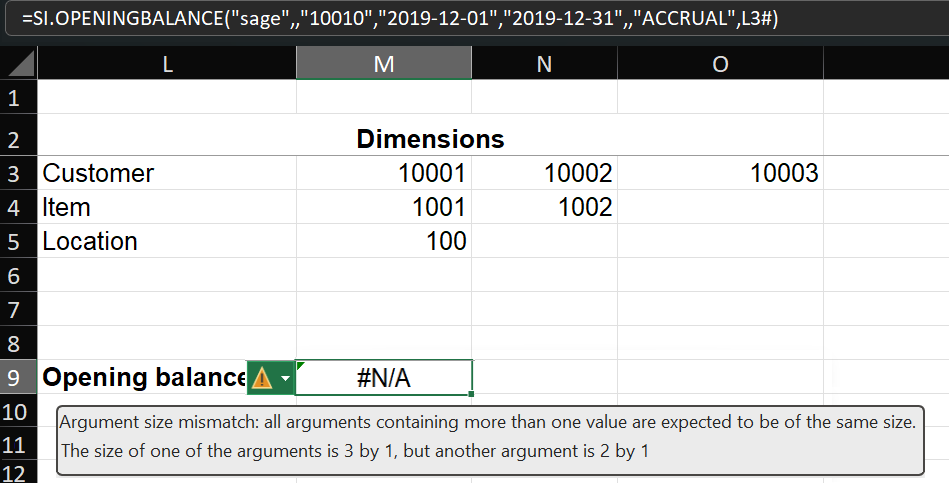SI.OPENINGBALANCE
Overview
The SI.OPENINGBALANCE function returns the opening balance of a GL account (at the beginning of the specified reporting period or date).
Syntax
=SI.OPENINGBALANCE(
ConnectionName,
AccountGroup,
Account,
FromDate,
ToDate,
LocationId,
Books,
Dimensions,
UserDefinedDimensions,
IncludeChildDimensionBalances
)Arguments
The SI. OPENINGBALANCE function uses the following arguments:
Argument | Required/Optional | Description |
| Required | The name of the connection as configured in the Connection Manager |
| Optional if | The name of the account group for which to return the aggregated opening balance. Computational Account Groups are not supported. |
| Optional if | The code of the general ledger account, or multiple account codes defined by a Velixo range expression |
| Required | The start date (inclusive) in YYYY-MM-DD format or a cell reference to a date in a valid Excel format |
| Required | The end date (inclusive) in YYYY-MM-DD format or a cell reference to a date in a valid Excel format |
| Required | The ID of the Sage Intacct entity or location. To filter location groups, you can use the |
| Optional | The reporting book or global consolidation book to be used for retrieving the balance. One or more user-defined adjustment book IDs may be included
|
| Optional | Either:
or
You can specify dimension values using ranges, wildcards, and other techniques. |
| Optional | Either:
or
|
| Optional |
The 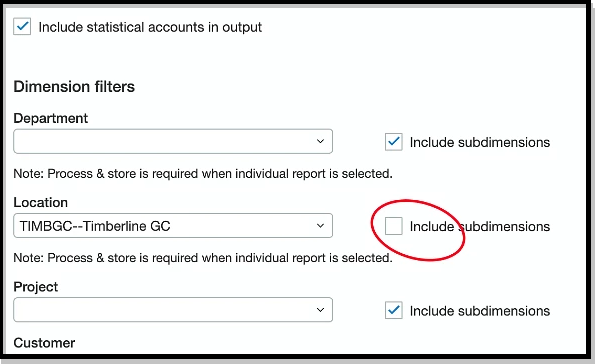 |
Examples
Revenue and Expense accounts
Consistent with Sage Intacct's Trial Balance and Account Balances reports, this function may always return zero for both revenue and expense accounts.
To calculate the starting balance of a revenue or expense account as of a particular date, calculate the Account Turnover from THE beginning of the appropriate financial year until one day before the report date.
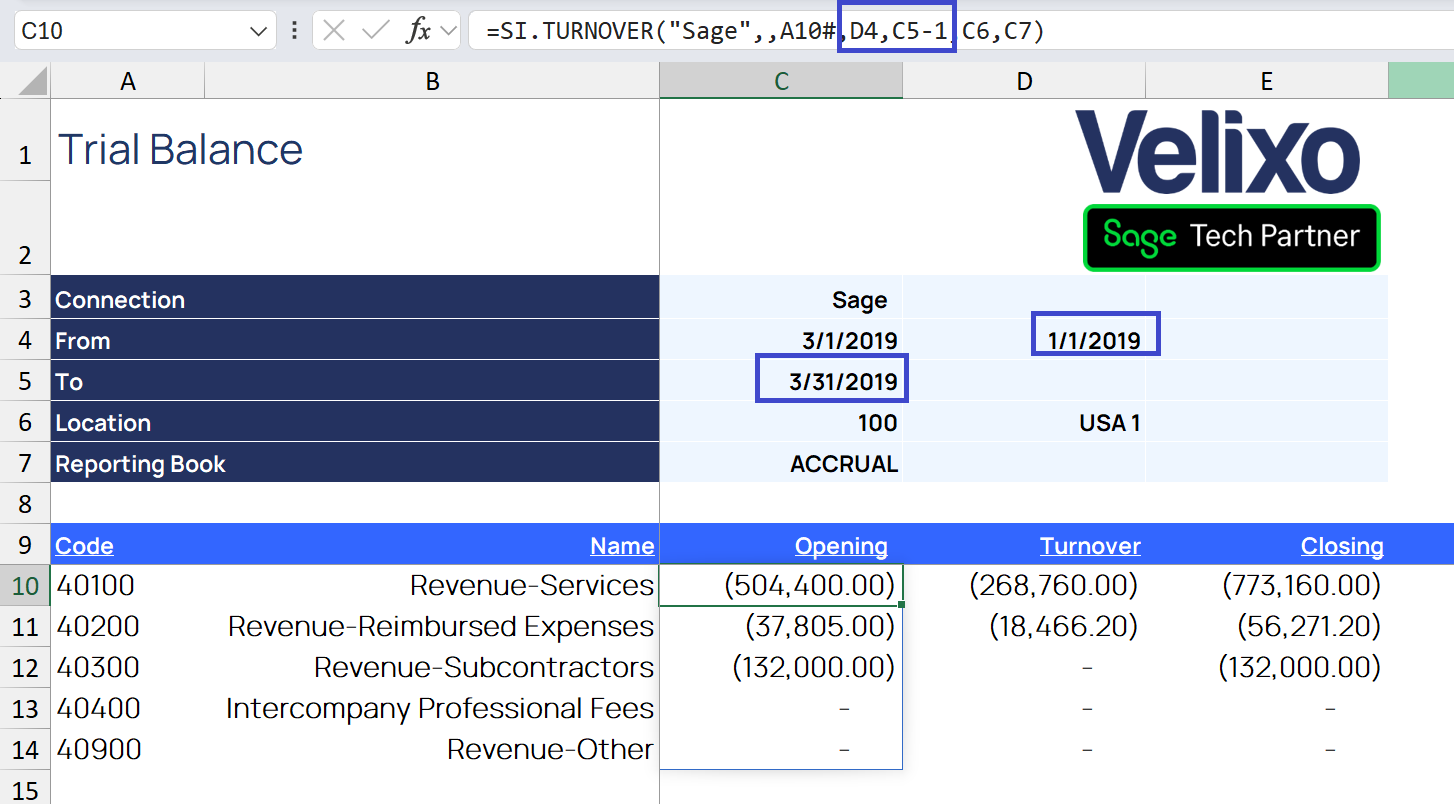
Example 1
=SI.OPENINGBALANCE(
"Sage",
,
"10100",
"2022-04-01",
"2022-04-01",
"100",
"ACCRUAL",
$C$6:$D$8
)Description
Returns the opening balance of the account "10100 - Cash" at the beginning of April 2022, for entity "100", filtered down by dimensions specified in the C6:D8 range (for example, by Department and Employee).
Result
441,692.00
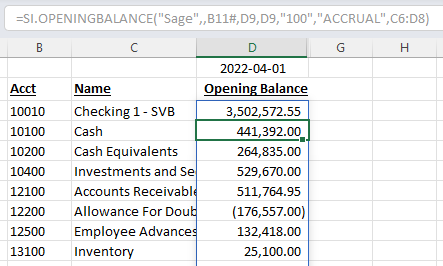
(this example uses cell references for some of the arguments)
Example 2 - Dimension Array
(Dimension arrays are available in version 2023.8 and higher)
The dimensions for Customer, Item, and Location each contain 3 values in an array where the first row of the array contains the dimension names.
Vertical
=SI.OPENINGBALANCE(
"Sage",
,
"10010",
"2019-12-01",
"2019-12-31",
,
"ACCRUAL",
I2#
)
Description
Returns the opening balance for account 10010 as of 2019-12-01, in the Accrual reporting book, based on the three dimensions displayed by the vertical array function in cell I2.
Results
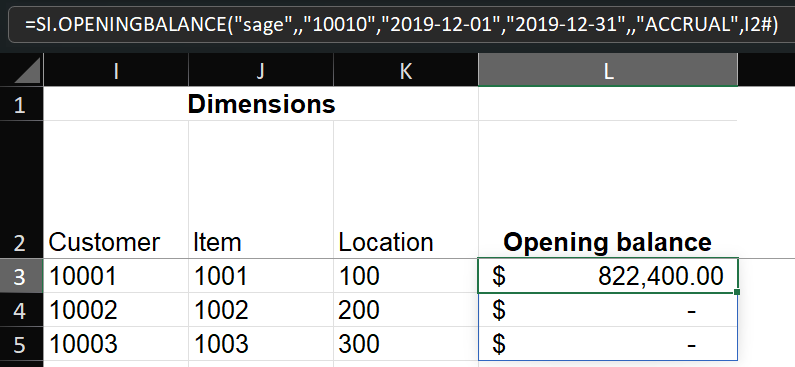
Horizontal
Description
Returns the opening balance for account 10010 as of 2019-12-01, in the Accrual reporting book, based on the three dimensions displayed by the horizontal array function in cell L2.
Results
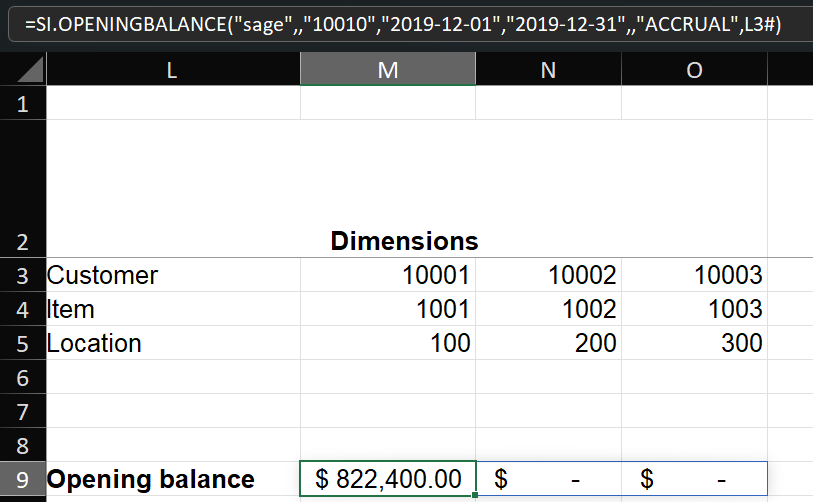
Example 3
While it is generally required that all of the applied dimensions have the same number of values, it is possible for one of the dimensions to have a single value.
In this example, the dimensions for Customer, and Item each contain 3 values while the dimension for Location contains only 1 value.
These functions return the opening balance for account 10010 as of 2019-12-01, in the Accrual reporting book, based on the single location (100) and the other two dimensions displayed by the array:
Vertical
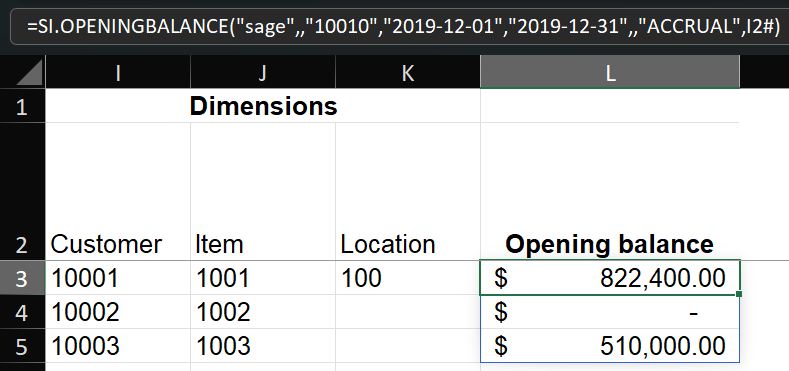
Horizontal
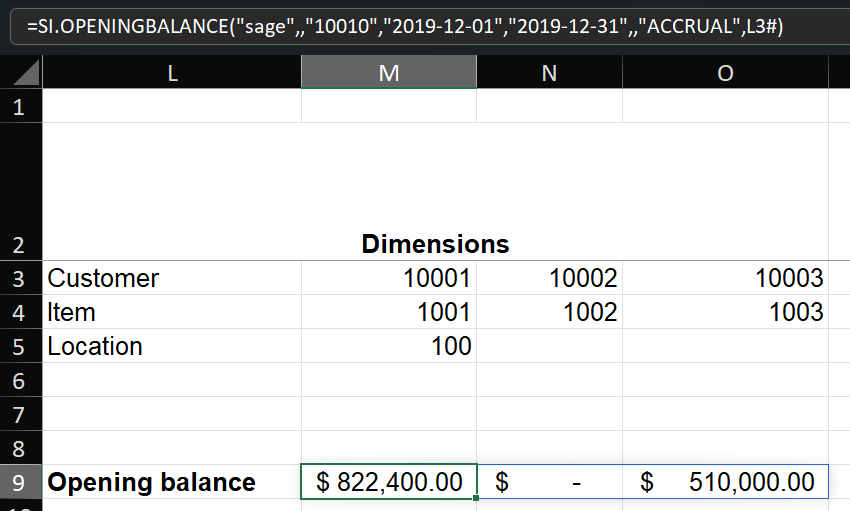
Example 4 - Empty Account Group
Assuming this below configuration within Sage Intacct:
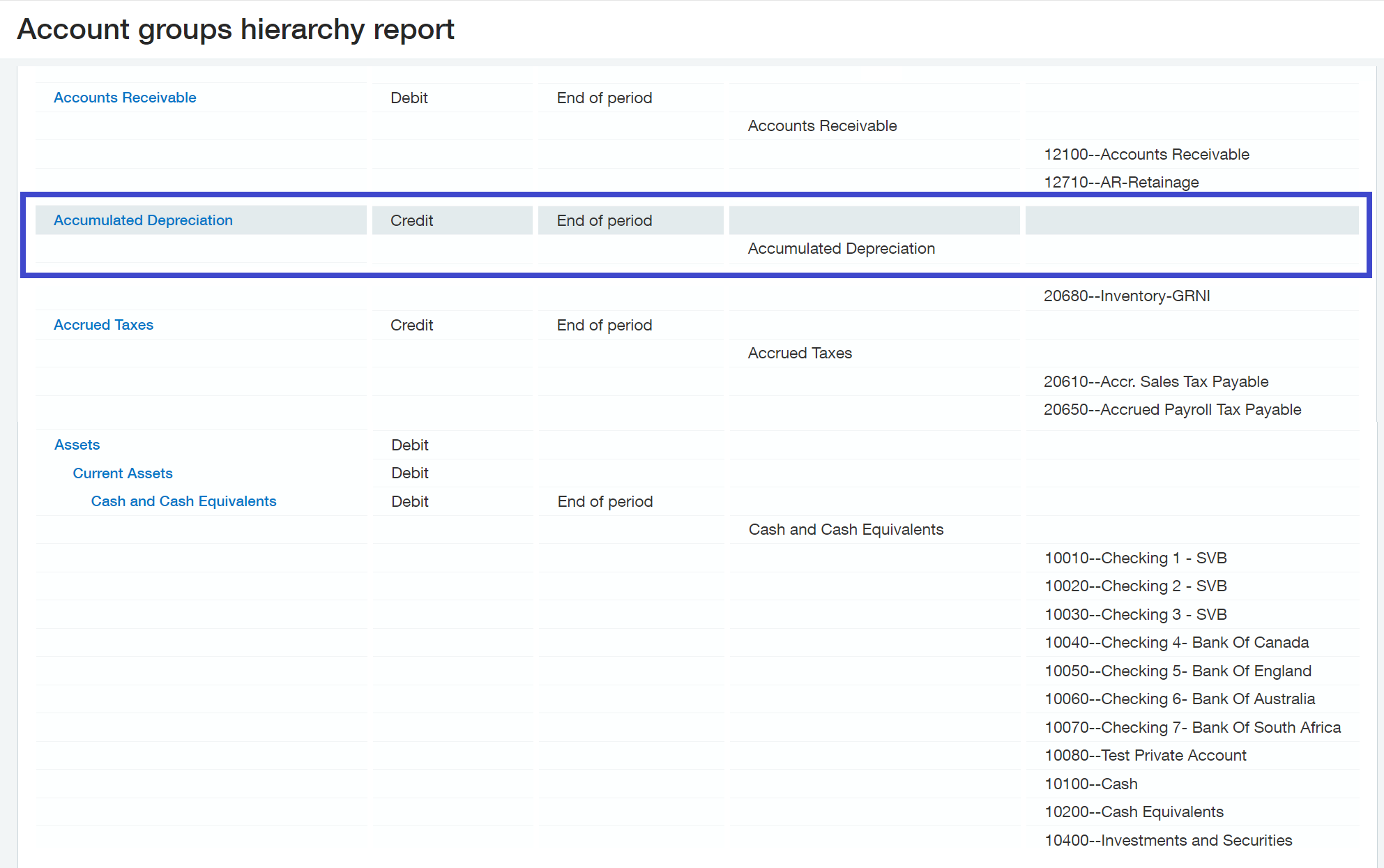
No accounts are assigned to the Accumulated Depreciation account group
=SI.OPENINGBALANCE(
"Sage",
"Accumulated Depreciation",
,
"2019-01-01",
"2019-12-31",
"100",
"ACCRUAL"
)
Description
The various Velixo balance functions (SI.OPENINGBALANCE, SI.TURNOVER, SI.CLOSINGBALANCE, and SI.BUDGETTURNOVER) will return zero when there are no accounts assigned to the referenced account group.
Results
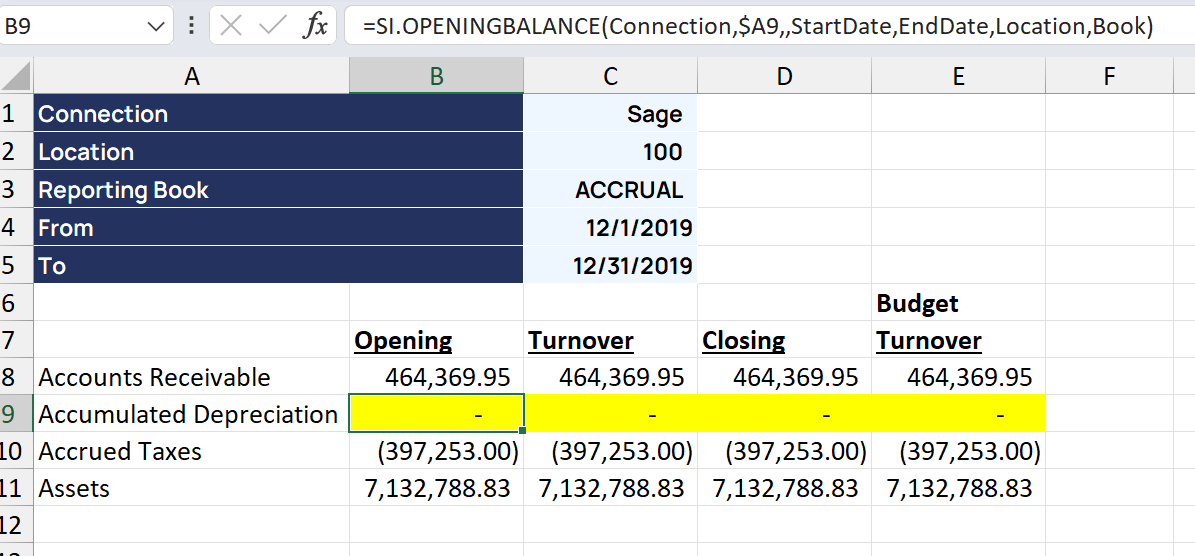
Example 5a - Include Child Dimension Balances with Location
Below are balances where the Dimensions and UserDefinedDimensions are not used, but where a Location is specified with the IncludeChildDimensionBalances argument:
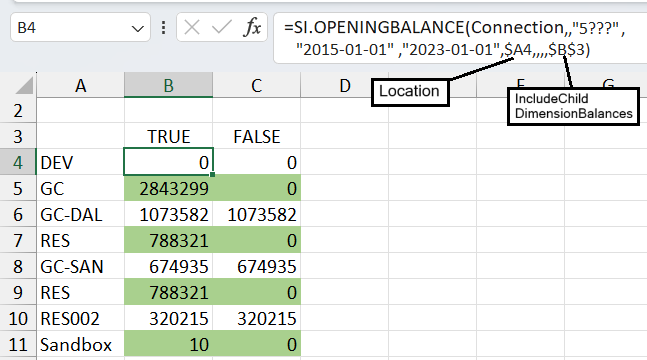
Example 5b - Include Child Dimension Balances or not
Below are balances for a specific Location, where Dimensions and UserDefinedDimensions are not used.
Customer 10007 is defined as a child account of customer 10001.
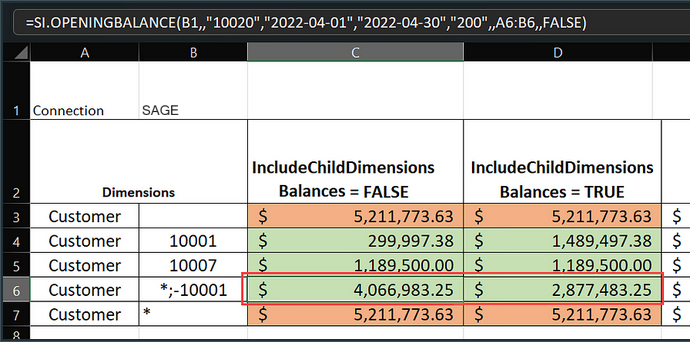
In row 6, when excluding the balance for customer 10001, you can choose whether or not to also exclude the balance for child account 10007.
Rows 3 and 7 use two techniques (blank and "*") to achieve the same result.
Unsupported Example
The case where more than one dimension contains less than the maximum number of rows in the array is not supported.
